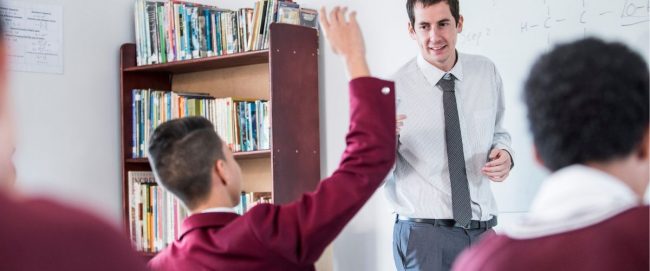How to Create a Positive Learning Environment in Your Home
As educators navigate the new world of digital and hybrid learning, they are working with parents to ensure seamless learning between school and home. Although parents are not teachers, they can be the experts on their children and create a positive learning environment that is conducive to learning. Here is a brief message with some tips and resources teachers can share with their families as part of ongoing communication.
Family Tips and Resources: Creating a Positive Learning Environment
-
Create productive learning spaces at home. You can be creative depending on the learning preferences of your child and your home environment. You can create a learning space with a table, a counter or a large box filled with pillows. You should ensure that your child has all the necessary materials for the learning activity, such as paper, pencils, and digital devices. As much as possible, try to minimize distractions. More ideas to create a learning environment at home.
-
A consistent daily schedule will help keep your child’s attention. . While we understand that the transition to digital/hybrid learning can be difficult for working parents, it is essential that you follow the school’s schedule and maintain a routine for your child’s education. This is a short summary. Here are some simple tips to help your child stay focused.
-
Get help with goal-setting and time management: Make time for family huddles at least once a week. Discuss who will be able to help your child complete homework and join virtual classes. To practice self-control, involve your child in setting goals. They can draw or write down their goals. Recognize your child’s accomplishments and encourage them to keep working hard. Make a list of people who can help your child learn and make arrangements for your child’s assistance. Your child may need to take some time to build confidence and track their progress towards success.
-
Make it more interesting with brain break or physical activity. This allows you to alternate schoolwork with short walks, exercise, and hands-on learning (reading and art), screen time (virtual museums tours, online activities), as well as social connections (such playing Roblox and Minecraft). You should ensure that communication functions such as chat with strangers, are disabled.
-
Be prepared: While is juggling work and learning digitally, be proactive and creative in supporting your child’s learning. Take advantage of every moment of the day. Find time to read with your child and discuss what they are learning. Children younger than 5 years old will need assistance in managing their learning activities. While older children might be able do their schoolwork independently, they will still benefit from discussing what they are learning. Encourage your child’s classmates to communicate via email, phone or video to socialize and collaborate on projects.
-
-
Develop motivation. You should be focusing on your child’s efforts and progress . Use language such as “You worked hard on that” or “Writing is difficult, but I can see how you are improving with practice!” This will encourage your child to continue with more challenging tasks. These additional tips will help keep your child motivated, especially when they are learning online.
-
Share your strategies to improve self-control, organization and executive function . One example: “I have trouble focusing on my job today. I am going to take a rest. Would you like to go for a walk with me? Take a walk with me.
-
Engage your child in new and unique ways . “Active Learning” refers to using new information immediately to “learn through doing”. “Passive Learning” is when you listen or watch to learn new information. These are some tips to help you learn online and offline with your child.
-
Learning information in multiple ways is a benefit to students. Students learn more from flashcards (print and digital) that include text and images, charts, graphs, etc., than cards that only show words.
-
It is important to keep students’ interest alive and not only by reading through textbooks every day. Every student can learn more if the activity is relevant to the subject. This includes clapping in math class, sketching in science class, and acting out during story time.
-
-
Learn what age is appropriate for your child. This resource offers great tips for setting screen-time limits, and helping your child to develop positive tech habits.
Our Vision
To create an environment where independent schools can learn and be a pillar in the community. Education is a way to instill strong morals and values.

What Does the Home Environment Have to Do with Learning?
Children thrive when their environment allows them to learn at home
Research has shown that the quality and quantity of a child’s early environment are a prerequisite for brain development. A stimulating learning environment can positively impact all learning areas later. Source: de Witt
Children require space, time and materials, as well as an environment that fosters their sense of security. This is an essential emotional need. Children need an environment that encourages learning and allows them to develop their brains.
What is the home learning environment? It has many aspects.
-
Their physical environment
-
They are the physical objects around them
-
They surround themselves with people
-
Their interactions with the rest of the world and people
How To Create a Positive Learning Environment At Home
It is easy to create a learning environment that fosters creativity. You only need to put in a little effort in order to make your home a learning environment for your children.
It is obvious that children require the basics first, such as food, shelter, and medical care, before they can learn.
Our Mission
We can leave a legacy that is more than knowledge from independent schools by instilling excellence and perseverance.

How to Encourage A More Positive Home Learning Environment
Why are home learning environments important?
A lot of research has been done about the importance of home learning in the first years. This makes it a strong argument for its crucial role in child development.
These are just a few of the things we know.
-
Increased learning opportunities in the home have been proven to have a positive impact on school literacy and numeracy achievement
-
Positive home learning environments are more important than parental occupation, education, or income.
-
Home learning environments have an impact on school readiness. A good one will increase independence and creativity once you get to school.
-
Parents are prepared. According to the most recent government survey, parents want to do more at home to help their child learn.
What is a good learning environment for home?
All this is great, but what does it mean to have positive home learning environments?
It is important to understand the importance of play and how to encourage and support children’s learning.
It is important to choose a starting point that can be reached from:
-
Children are heard
-
They are highly valued for their contributions
-
They are valued and taken seriously
-
Encouragement of their language and thought
How about examples specific?
-
Singing nursery rhymes and songs
-
Reading aloud with your child
-
Visit the library
-
Playing with numbers and letters
-
Drawing and painting
-
Take your children out and about
-
Play with your friends at home
Our Philosophy
We believe that learning happens when we explore, investigate, and discuss. Knowledge is shared.













